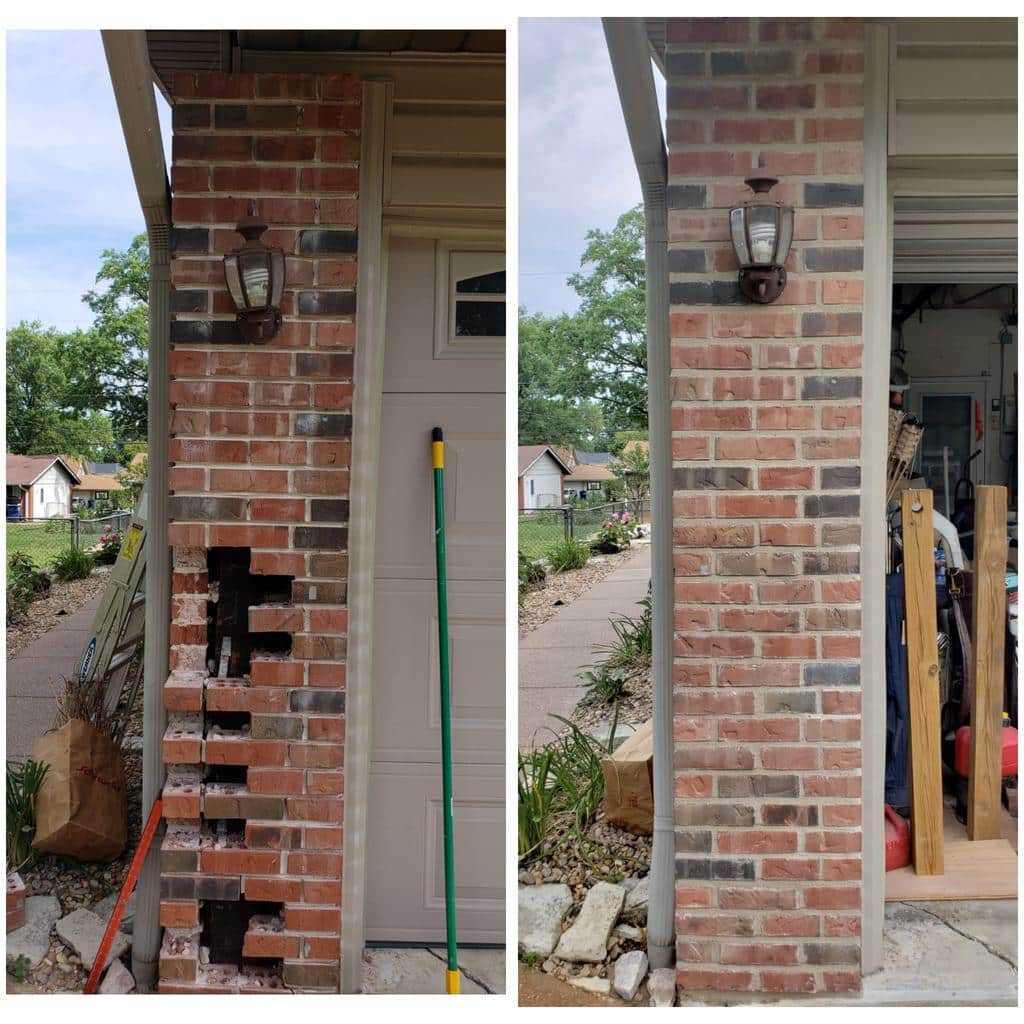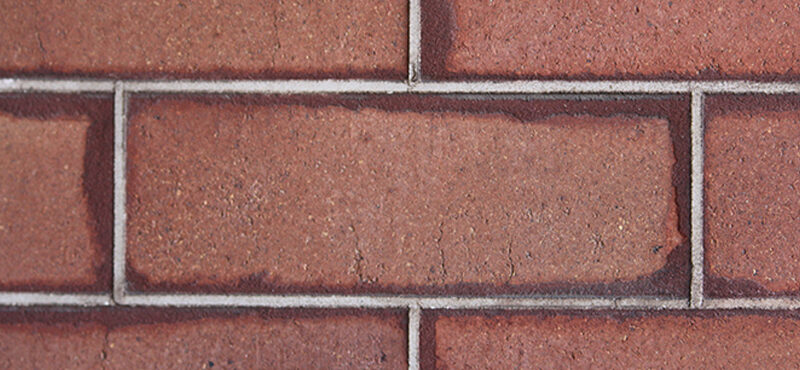Improve Aesthetic Charm with Raul's Tuckpointing St. Louis MO Services: Top Quality Renovations
Wiki Article
Boost the Charm and Durability of Your Brickwork With Tuckpointing
Over time, the mortar that holds those blocks with each other can weaken, leaving your framework at risk to harm and detracting from its visual allure. Concern not, for there is a solution that can bring back both the charm and resilience of your brickwork: tuckpointing. In this discussion, we will certainly explore the essentials of tuckpointing, its advantages, the distinction in between tuckpointing and repointing, the process itself, and the vital techniques for preserving and caring for tuckpointed brickwork.The Fundamentals of Tuckpointing
Tuckpointing is a proficient method made use of to fix and improve the appearance and architectural honesty of brickwork. It entails the process of getting rid of scrubby mortar joints and changing them with fresh mortar. The term "tuckpointing" describes the method of using two various shades of mortar to create the illusion of fine joints, giving the brickwork a much more refined and cosmetically pleasing appearance.
The primary step in tuckpointing is to carefully examine the condition of the brickwork. This includes checking the mortar joints for signs of damage, such as breaking, crumbling, or missing out on mortar. Once the trouble areas have actually been recognized, the old mortar is meticulously gotten rid of making use of specialized tools, such as a mill or sculpt, while making sure that the blocks themselves remain intact.
After the old mortar has actually been gotten rid of, the following step is to prepare the joints for fresh mortar. This typically entails cleaning any particles or loosened material and wetting the joints to guarantee correct bond. A knowledgeable tuckpointer uses a directing trowel to very carefully fill the joints with fresh mortar, making sure to create a flush and consistent surface area.
Advantages of Tuckpointing
Improving both the durability and appearance of brickwork, tuckpointing deals numerous notable advantages for property owners and homeowner alike. One of the primary benefits of tuckpointing is its capability to extend the life expectancy of brick frameworks. By changing deteriorated mortar joints, tuckpointing protects against moisture from seeping right into the brickwork, which can lead to structural damages with time. This aids to maintain the stability of the brickwork and prolong its general resilience.Another advantage of tuckpointing is its capability to improve the visual charm of block frameworks. In time, mortar joints can become broken, faded, or stained, diminishing the total appearance of the brickwork. Tuckpointing entails meticulously eliminating the damaged mortar and changing it with fresh mortar of a different shade. This technique allows for the development of tidy, crisp lines that provide the impression of well-maintained brickwork. It can also be used to create ornamental patterns or layouts, even more enhancing the aesthetic appeal of the structure (Raul's Tuckpointing St. Louis MO).
Along with enhancing the durability and look of brickwork, tuckpointing can also increase the worth of a property. Well-maintained brickwork is seen as a preferable function by possible buyers and can dramatically improve the aesthetic charm of a property. When the time comes to place the residential property on the market., this can lead to a higher marketing cost and a quicker sale.
Tuckpointing Vs. Repointing: What's the Distinction?

To distinguish in between tuckpointing and repointing, it is very important to recognize the key differences in between these 2 approaches of brickwork reconstruction. While both strategies aim to maintain the structural integrity and visual appeal of brickwork, they differ in their approach and implementation.
Tuckpointing is a thorough process that includes using 2 various colors of mortar to develop the impression of great joints. This technique is mainly made use of to enhance the aesthetic allure of brickwork by developing the appearance of well-maintained and well-crafted joints. The tinted mortar is meticulously applied and formed to match the shade and profile of the original mortar, providing the impact of precision and craftsmanship.
On the other hand, repointing is an extra straightforward procedure that involves eliminating damaged or tatty mortar from the joints and changing it with fresh mortar. The key objective of repointing is to restore the architectural integrity of the brickwork by making sure correct bonding and sealing between the blocks. Unlike tuckpointing, repointing does not include the usage of tinted mortar or the development of an ornamental More Bonuses impact.
The Refine of Tuckpointing
The application of two different shades of mortar to create the impression of fine joints is a meticulous procedure referred to as tuckpointing. This strategy includes getting rid of tatty mortar joints and changing them with brand-new mortar to improve the look and structural stability of the brickwork. The procedure of tuckpointing can be divided into numerous actions.First, the old mortar is carefully eliminated using specialized tools such as knives and mills. It is vital to get rid of the mortar to a sufficient depth to make certain a strong bond with the new mortar.
Following, the joints are completely cleaned to get rid of any debris or dirt. This assists to create a clean surface for the brand-new mortar to comply with.
When the joints are cleaned up, a thin layer of brand-new mortar is applied to the joint making use of a tiny pointing trowel. This first layer, referred to as the "pointing up" mortar, is generally the same color as the existing mortar.
After the first layer has been used, a 2nd layer of mortar is applied on top of it. This 2nd layer, called the "fillet" mortar, is a various color and is carefully formed to develop the illusion of a great joint.

Caring and preserving for Tuckpointed Brickwork
Once the tuckpointing procedure is completed, correct upkeep and care are important to preserve the improved elegance and resilience of the brickwork. This upkeep not only makes sure that the tuckpointed areas continue to be practical and intact but additionally helps to protect against any possible damages to the general framework.One of the essential facets of preserving tuckpointed brickwork is normal cleaning. This entails getting rid of any dirt, debris, or moss that may accumulate externally of the blocks. A soft brush or a low-pressure power washing machine can be made use of for this function. It is essential to prevent using any kind of harsh chemicals or unpleasant tools that can possibly harm the mortar or the blocks themselves.
In addition to cleansing, it is vital to inspect the tuckpointed areas occasionally. This permits the very early discovery of any type of indications of degeneration or damage. Any type of fractures, loose mortar, or indicators of water damage must be dealt with immediately to stop further deterioration.
In addition, ensuring correct drain around the see post brickwork is crucial. Water merging or improper drainage can cause moisture penetration, which can weaken the mortar and create structural damage. Clearing up seamless gutters and downspouts consistently and making sure that they are properly routed away from the brickwork can aid avoid these issues.
Lastly, it is recommended to talk to an expert tuckpointing service provider for regular repair and maintenance. Their knowledge and experience can ensure that any kind of essential fixings are done properly, preserving the integrity and durability of the tuckpointed brickwork.
Verdict
In final thought, tuckpointing is an useful strategy for enhancing the elegance and sturdiness of brickwork. Tuckpointing entails the removal and replacement of worn-out mortar, resulting in a clean and consistent appearance.
It entails the process of eliminating deteriorated mortar link joints and changing them with fresh mortar. Raul's Tuckpointing St. Louis MO.After the old mortar has actually been gotten rid of, the next action is to prepare the joints for fresh mortar. Tuckpointing includes meticulously removing the damaged mortar and replacing it with fresh mortar of a different color. The colored mortar is very carefully used and shaped to match the color and profile of the original mortar, offering the impression of precision and workmanship

Report this wiki page